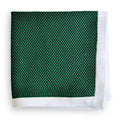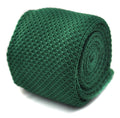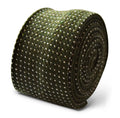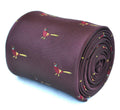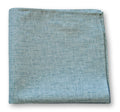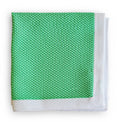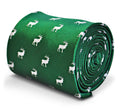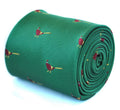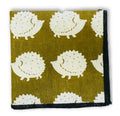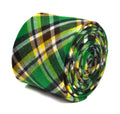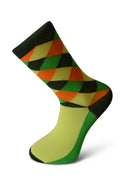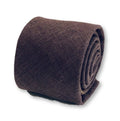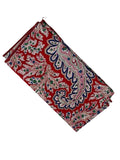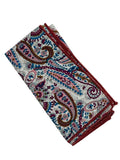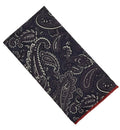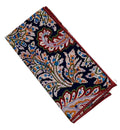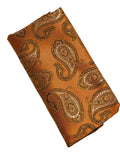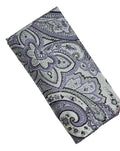Unveiling Your Personal Style: A Definitive Guide to Necktie Patterns and Textures
Posted by FREDERICK THOMAS HANDMADE MENS TIES

Introduction: Beyond the Basic Knot – The Art of Necktie Selection
For the discerning professional, a necktie is more than just an accessory; it's a statement. While knowing how to tie a tie is fundamental, truly elevating your style means understanding the nuances of selection. Our previous guides have touched upon the essentials of tie length and width, but today, we delve deeper into the captivating world of necktie patterns and textures. These elements are crucial in expressing your individual style, conveying confidence, and making a memorable impression in any setting, from the boardroom to a social gathering.
This guide will illuminate the diverse range of patterns and necktie fabrics available, helping you choose the perfect tie to complement your outfit and personality. Prepare to unlock a new dimension in your sartorial journey.
The Language of Patterns: Decoding Your Necktie Choices
Necktie patterns offer a rich vocabulary for personal expression. Each pattern carries its own unique connotations and is suitable for different occasions. Understanding these can transform your wardrobe.
- Striped Ties: A timeless classic, striped ties are incredibly versatile. Vertical stripes tend to elongate the silhouette, while diagonal stripes, particularly those running from left to right (from the wearer's perspective), are often associated with traditional business attire. Varying stripe widths and colors can create distinct looks, from bold power statements to subtle, understated elegance.
- Polka Dot Ties: Playful yet refined, polka dot ties add a touch of whimsy without sacrificing professionalism. Smaller, denser dots are generally more formal, perfect for business or semi-formal events. Larger, more spaced-out dots can be a stylish choice for creative industries or social gatherings.
- Paisley Ties: Evoking a sense of history and artistry, paisley ties are intricate and eye-catching. Their teardrop-shaped motifs can range from subtle tone-on-tone designs to vibrant, multi-colored statements. Paisley is an excellent choice for adding a sophisticated, artistic flair to a suit, particularly for events where you want to stand out gracefully.
- Floral Ties: Once considered purely casual, floral ties have made a significant stride into modern formal wear. Depending on the size and color of the floral print, they can convey anything from understated elegance to bold, seasonal panache. Small, muted floral patterns work well in professional settings, while larger, brighter blooms are perfect for weddings or garden parties.
The Tactile Dimension: Exploring Necktie Textures and Fabrics
Beyond visual patterns, the texture and fabric of a necktie play a pivotal role in its overall aesthetic and how it drapes. The material impacts not only the look but also the feel and formality of the tie.
- Silk Ties: The undisputed king of necktie fabrics, silk offers unparalleled luster and drape. Its smooth, soft texture allows for crisp knots and a luxurious appearance. Silk ties are the go-to for formal business attire and special occasions, available in a vast array of weaves, from smooth satin to subtle twill.
- Knitted Ties: Offering a distinct, three-dimensional texture, knitted ties provide a more casual yet sophisticated alternative. Typically made from silk, wool, or cotton, their square bottoms and tactile feel make them perfect for smart casual outfits, adding a touch of laid-back elegance. They pair wonderfully with blazers, tweed, and patterned shirts.
- Wool and Cashmere Ties: Ideal for cooler months, wool and cashmere ties offer a rich, matte texture and a warmth that silk cannot match. They convey a sense of gravitas and are excellent for adding a tactile dimension to autumnal and winter ensembles. These ties often feature patterns like plaids or herringbones that complement their inherent texture.
- Linen and Cotton Ties: These lighter fabrics are perfect for spring and summer. They have a more relaxed, matte finish and are less prone to wrinkling than silk in warm weather. Linen and cotton ties exude a casual elegance, making them suitable for garden parties, casual Fridays, or destination weddings.
Mastering the Mix: Pairing Patterns and Textures with Your Outfit
The true art of tie selection lies in how you pair your chosen pattern and texture with your shirt and suit. The goal is harmony, not competition.
- Contrast is Key: When combining patterns, ensure there's a difference in scale. If your shirt has fine stripes, opt for a tie with broader stripes, larger polka dots, or a prominent paisley. Avoid pairing two patterns of similar size, which can create a busy, clashing look.
- Texture Play: Use texture to add depth. A smooth silk tie beautifully contrasts a crisp cotton shirt, while a tactile knitted tie can add interest to a plain wool suit. Mixing textures creates visual appeal and shows an understanding of subtle styling.
- Color Coordination: While patterns and textures provide the foundation, color ties everything together. Ensure that at least one color in your tie complements or contrasts effectively with your shirt or suit. For a professional setting, stick to more subdued colors and classic patterns.
Conclusion: Your Tie, Your Statement
From the enduring charm of striped ties to the artistic flourish of paisley ties, and the tactile appeal of knitted ties, the world of necktie patterns and textures offers endless possibilities for personal expression. Moving beyond the basics of common tie knots, understanding these intricate details empowers you to select a tie that not only completes your outfit but also communicates your unique style and attention to detail.
Embrace the opportunity to experiment with different patterns and textures. Each tie tells a story; ensure yours is compelling and authentically you. What's your go-to pattern or texture for a statement piece? Share your thoughts in the comments below!


